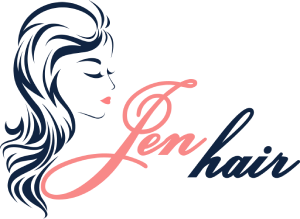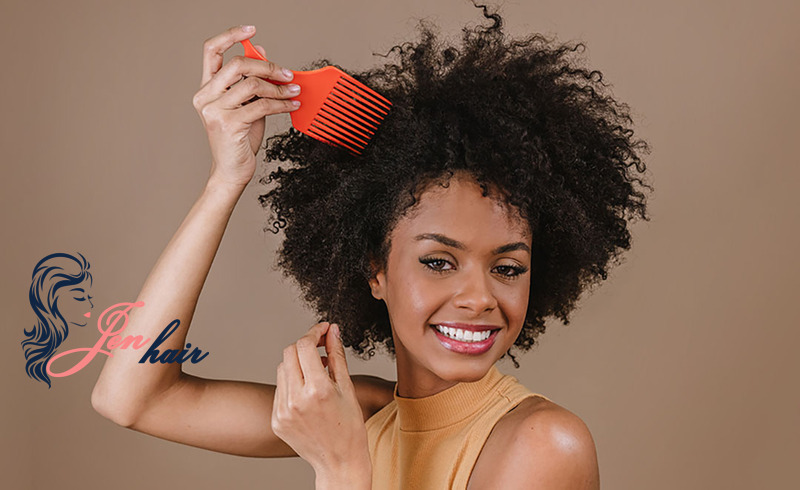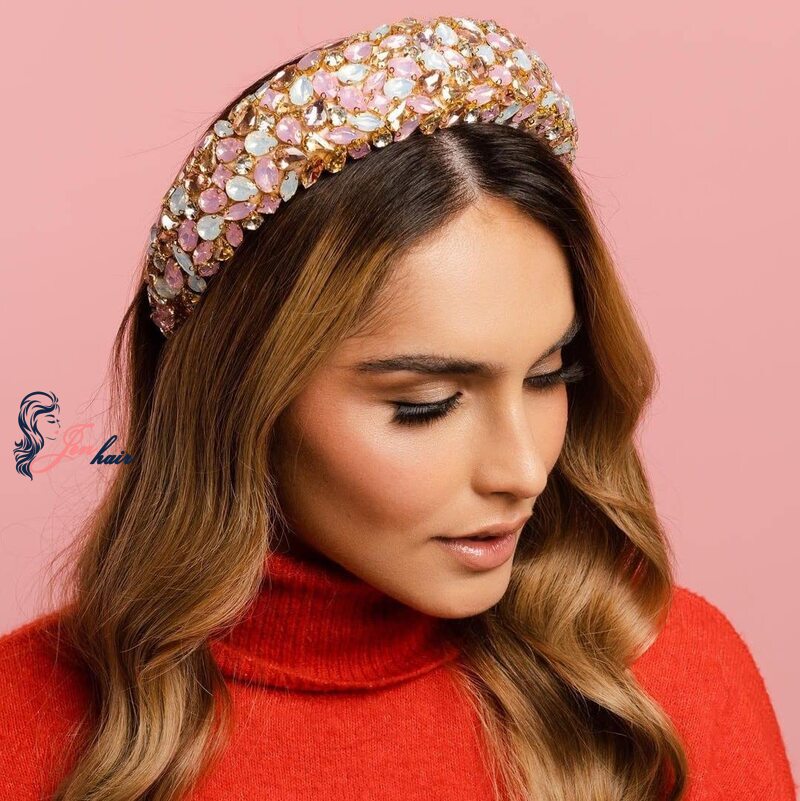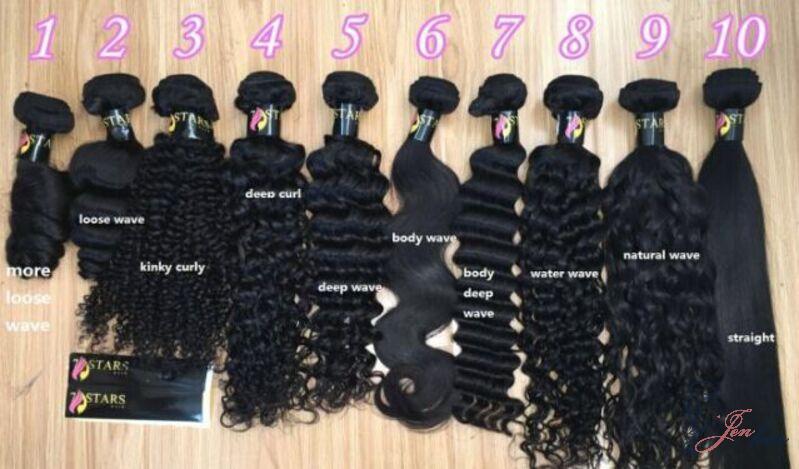No products in the cart.
Hair Care Guide
Brazilian vs Peruvian vs Malaysian vs Indian hair: The difference
In recent years, the hair extension and wig industry have flourished, offering individuals the opportunity to experiment with various hair types from across the globe. Among the most sought-after hair types are Brazilian, Peruvian, Malaysian, and Indian hair, each known for its unique characteristics and qualities.
However, the question remains: what truly sets Brazilian vs Peruvian vs Malaysian vs Indian hair apart? In this comparative exploration, we delve into the differences between these hair types, shedding light on their origins, textures, and suitability for various hairstyles and ethnicities.
Join us on this journey of discovery as we unravel the intricacies of Brazilian, Peruvian, Malaysian, and Indian hair, offering insights into how each type can enhance one’s beauty and confidence.
Brazilian hair
Brazilian hair is a highly sought-after type of human hair known for its exceptional quality, versatility, and natural appearance. It is obtained from donors in Brazil, a country renowned for its diverse ethnicities, resulting in a wide range of hair textures and colors available in the market.
Brazilian hair is extremely well-liked due to a number of factors, including its thickness and density. Brazilian hair is perfect for those who want full, voluminous hair because it is often thick, robust, and full-bodied. The majority of the time, the hair strands are strong and naturally shiny, giving it a youthful and alluring appearance.

The texture of Brazilian hair can vary, but it is commonly characterized as being soft and silky with a slight wave pattern. This inherent wave allows the hair to hold curls well, making it a popular choice for those seeking versatile styling options. Whether worn straight, curled, or wavy, Brazilian hair retains its shape and bounce, providing a natural and glamorous appearance.
When it comes to color, Brazilian hair usually comes in various natural shades, ranging from dark brown to nearly black. This wide range of colors makes it easier for individuals to find a suitable match for their natural hair, enhancing the overall blending and seamless integration of the extensions or wigs.
Peruvian hair
Similar to Brazilian hair, it is known for its exceptional quality and versatility, making it a favored choice among individuals seeking natural-looking and glamorous hair solutions.
Peruvian hair originates from donors in Peru, a country situated in South America, and is well-regarded for its unique characteristics. One of the notable features of Peruvian hair is its luxurious softness and silkiness. The hair strands are incredibly smooth and fine, giving it a sleek and elegant feel. This soft texture is particularly appealing to those who prefer a more delicate and lightweight option for their hair extensions.

Unlike the natural wave pattern commonly found in Brazilian hair, Peruvian hair often has a straight or slightly wavy texture. This straightness gives it a polished and sophisticated look, making it suitable for those who desire a sleek appearance. However, it is also versatile enough to hold curls when styled, offering a range of possibilities for various hairdos.
One of the advantages of Peruvian hair is its ability to blend seamlessly with a diverse range of hair types, including African, Caucasian, and Asian hair. Its fine texture allows for easy integration with different natural hair textures, ensuring a natural and undetectable look.
Malaysian hair
Malaysian hair is another popular type of human hair known for its excellent quality and unique characteristics. It is sourced from donors in Malaysia, a Southeast Asian country with a diverse population, resulting in a wide variety of hair textures and colors available in the market.
One of the standout features of Malaysian hair is its thickness and volume. Malaysian hair is typically coarser and denser compared to other hair types like Brazilian and Peruvian hair. This natural thickness gives it a luxurious and full-bodied appearance, making it a preferred choice for those who desire voluminous and glamorous hairstyles.

The texture of Malaysian hair is generally straight with a slight natural wave. While it may not have the same level of natural wave as Peruvian hair, it still holds curls exceptionally well when styled.
One of the benefits of Malaysian hair is its manageability and ease of styling. The hair is relatively low maintenance and easy to handle, making it an excellent choice for those who may be new to wearing hair extensions or wigs.
When it comes to color, Malaysian hair typically comes in natural dark shades, similar to Brazilian and Peruvian hair. This range of dark colors allows for easy blending with various natural hair colors, ensuring a seamless and natural look.
Indian hair
Indian hair is one of the most widely recognized and sought-after types of human hair in the global hair market. It is sourced from donors in India, a country known for its cultural diversity and rich heritage.
One of the key attributes of Indian hair is its diversity in texture and color. Due to the wide range of ethnicities in India, hair types can vary significantly from fine and silky to coarse and wavy. This variety allows individuals to find Indian hair that closely matches their natural hair texture, ensuring seamless integration and a natural look.

Furthermore, Indian hair is often sourced ethically from donors who willingly give their hair for religious or cultural reasons. This ethical sourcing ensures that the hair has not undergone any harsh chemical treatments, preserving its natural integrity.
Indian hair is prized for its strength and durability. The hair strands are generally robust and less prone to breakage, making it a long-lasting option for hair extensions and wigs. With proper care, Indian hair can maintain its high-quality condition for an extended period, even with regular styling and handling.
Indian hair is also highly regarded for its versatility in styling. It can be easily straightened, curled, or styled in any desired manner, maintaining its shape and bounce. This flexibility makes Indian hair a favorite among those who enjoy experimenting with different hairstyles.
Which hair is better?
The question of which hair type is “better” largely depends on individual preferences and specific needs. Each type of hair – Brazilian, Peruvian, Malaysian, and Indian – offers unique characteristics and qualities that may appeal to different people based on their hair texture, style preferences, and lifestyle.
Here are some key points to consider when determining which hair type might be a better fit for you:
- Texture: Consider the natural texture of your hair and how closely you want the hair extensions to match it. Brazilian hair often has a natural wave, Peruvian hair is straight to slightly wavy, Malaysian hair is straight with a slight wave, and Indian hair offers a wide range of textures from fine and silky to coarse and wavy.
- Thickness: If you desire voluminous and full-bodied hair, Brazilian or Malaysian hair might be more suitable due to their thicker and denser nature.
- Softness: Peruvian and Indian hair are known for their softness, while Malaysian hair is relatively easy to manage.
- Styling options: All hair types can be styled, but some may hold curls better than others. Brazilian hair, for example, tends to hold curls well due to its natural wave pattern.
- Longevity: Brazilian, Peruvian, and Indian hair are generally durable and long-lasting with proper care, while Malaysian hair is also known for its resilience.
Final thoughts
In conclusion, the comparison between Brazilian vs Peruvian vs Malaysian vs and Indian hair reveals a fascinating array of unique characteristics and qualities that cater to diverse preferences and style aspirations. Each hair type offers distinct advantages, and the “best” choice depends on individual needs and desired outcomes.
Hope that you love what we share.
If you want to discover more, why don’t you follow us right now?

 Guide Cornrows With Side Part The Best For Beginner
Guide Cornrows With Side Part The Best For Beginner Ultimate Guide: Headband with Hair Attached (Best Styles for 2025)
Ultimate Guide: Headband with Hair Attached (Best Styles for 2025) Top 7 Premium Human Hair Clip In Extensions For Black Hair
Top 7 Premium Human Hair Clip In Extensions For Black Hair
